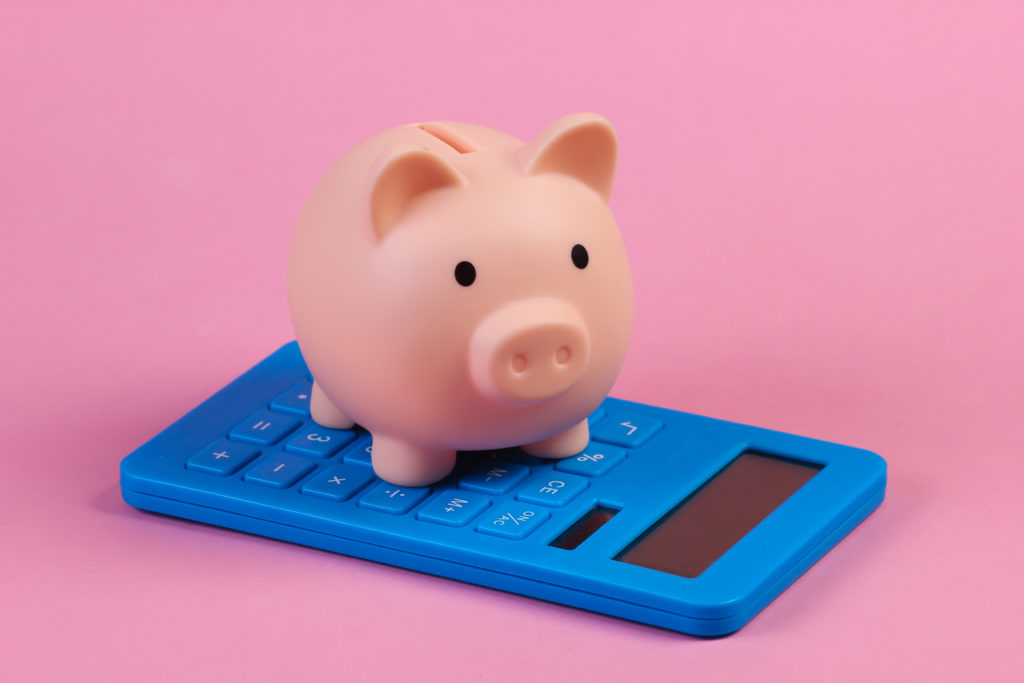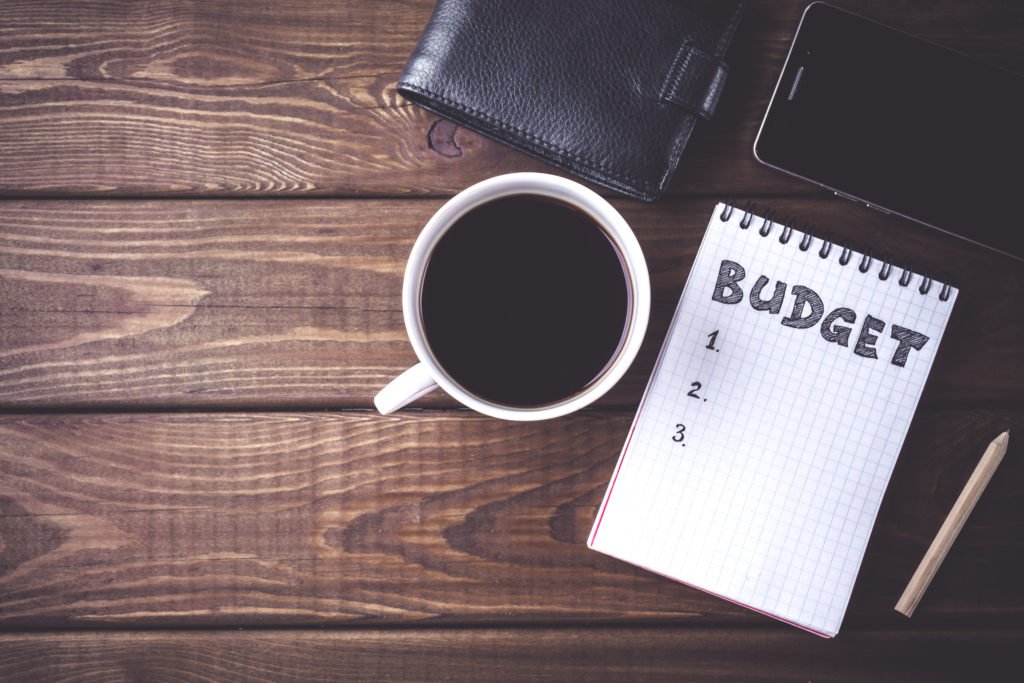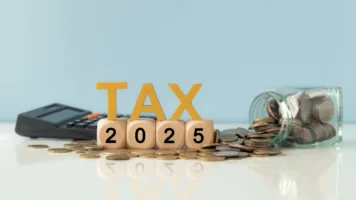Creating a Personal Budget In 5 Steps
So you’ve landed a great job, have a good apartment or house, and you’re paying your bills. You think: I’m adulting. I got this. Then an unexpected bill hits. but you have already used up the last of your savings on that car repair – and payday isn’t going to come for another week! Meanwhile, you have a credit card bill to pay and daily expenses to manage. Looks like it’s time to think about creating a personal budget. Luckily, we’ve mapped out a simple 5-step guide to creating a personal budget.
Nowadays, there are so many great tools and money management apps to help guide you through the process of creating a personal budget. All you have to do is follow along and update it whenever life changes.
Later, we’ll discuss some of our favourite budgeting templates and tools. But first, let’s talk about how to start creating a personal budget.
Overview
- Figure out your net income
- Write down all your bills each month
- Make a plan and decide how much will go in each category
- Adjust the plan to cut and/or save
- Continue to update the budget
- 5 Tools for creating a personal budget
Advantages of creating a personal budget
There are a lot of advantages that come with finally getting that personal budget mapped out, including making it easy to:
- Keep track of your daily, weekly, monthly, and yearly expenses
- Focus your saving on non-essential expenses instead of sacrificing things you really need
- Maintain or build a good credit rating by managing your debt
- Identify fraudulent purchases right away
- Set yourself up for a financially secure future
How to set up a personal budget in Australia: a beginners guide
1. Figure out your net income
The first step to creating a personal budget is to total your income. Write down all the ways you make money each month. Besides paychecks, do you receive:
- Child support
- Pension payments
- Second job supplemental income
- Government benefits or investment income
- Any other income sources
All of these factor into your net income for a month.
But keep in mind to avoid factoring in income that doesn’t pay regularly, like performance-based bonuses. Instead, you could use these income sources as a way to pay down debt or increase your savings.
2. Write down all your bills each month
The next step to creating a personal budget is to total your expenses. Any monthly bill you have needs to be accounted for in your budget — from electricity to gym memberships. Even if you have a Netflix subscription, you pay for it each month, so that goes into the budget as well.
Keeping track of every cent will help you figure out how and where your money goes so you can better decide if there’s something you can ditch or cut back on to help your cash flow.
Plan your categories before you start
Knowing how to write a personal budget requires knowing what types of expenses you have each month. So, track your spending for a week or two to figure out what categories you’ll need to have for expenses.
This can be a tricky one to remember. You need to keep track of everything you spend money on so you know what’s happening to it. Coffee with a friend? Write it down. Grabbing takeaway on the way home from work? Put it in the budget tracker. Meeting up with your mates to see a movie? Need to keep track of it.
All of these things add up quickly and can contribute to being in the red more than the black. If you understand how much you have to spend on those types of items, then in the future you can stop yourself before you regret it.
3. Make a plan and decide how much will go in each category
Once you see how much you have coming in and how much goes out each month, it’s easier to budget. You can then set up amounts that you will allow yourself to spend in any given category. Groceries, coffee, alcohol, dining, entertainment and more will have a line item in your new personal budget.
Perhaps you will find yourself with more to spend than you thought. Or, more likely, as most people do, you’ll see that you need to cut how much you spend in certain categories.
Tip for creating a personal budget: Set short, medium, and long term goals to help track your budgeting progress.
4. Adjust the plan to cut and/or save
It’s time to get to the fun part! Once you can see all of your money ins and outs on paper, in a spreadsheet, or even in an app, it becomes easy to see what to cut. You’ll find that you might want to grab a mug of coffee or a glass of wine and really dig into it.
Figure out what needs to be adjusted so you can start to chip away at some of your long-term financial goals. Whether that’s getting rid of debt, saving for your first house, buying a car, or going on an amazing holiday.
By studying your expenses and trying to plan ahead, you can start to anticipate what bills are coming in and how exactly you’ll pay them. This is a major component for you to gain an understanding of your overall fiscal health.
5. Continue to update the budget
Once you have finished creating a personal budget, you’ll see how easy it is to follow. You may find yourself playing a game of seeing how often you can come in under budget. It’s a great feeling when you start seeing more black months than red. However, when anything changes it will affect your budget. So you need to make adjustments and reset your numbers semi-regularly.
For example, you get a new job and start making more each month (hooray!). When that happens you’ll want to figure out a new set of numbers for your monthly income. However, if you get a new job that pays a set income but also gives extra money in bonuses, then you’ll adjust your budget to only include the set income (not the bonuses). Because you can’t rely on the bonus money coming in regularly and you might find yourself short on cash by over budgeting for the month.
Other things that you adjust your budget for include:
- Life events like raises
- Buying a house or car
- Having a baby
- Paying off debt or student loans
- Any other significant life changes
5 Tools for creating a personal budget
Even if you’re a whiz at Excel spreadsheets, sometimes it’s just simpler to not reinvent the wheel. We’ve found five budget creation tools that are easy to use, free, and will have you budgeting with the best of them quickly.
1. ASIC’s MoneySmart Budget Planner
This government budget template has a few bells and whistles that help make it easy to put together a personal budget.
Budget template features
The MoneySmart budgeting tool features a budget calculator that you can fill out online and then save the final summary. And there is an Excel spreadsheet version that you could fill out, save, and use to maintain and update your budget in the months and years ahead.
There is even a budget planning wizard that helps you figure out what types of categories you’ll need to create your own budget. You answer a few simple questions and the calculator adjusts for your situation.
One major plus of the online calculator version is that you won’t feel like you are doing an oversimplified budget because there are plenty of details included. Not only do you have main categories, but within each one, you’ll be required to fill in amounts for things like cosmetics, toiletries, council rates, and mobile phone payments.
2. My Money Blog’s Template
This budget template is an Excel spreadsheet with all kinds of calculations already plugged in so you just fill it out, and you’ll be ready to go.
Budget template features
You start with the tab called ‘annual ’that provides data to all the month tabs. As it notes on that tab: if you mess with the numbers on the annual tab then all the numbers in every month are adjusted.
While you need to keep this in mind when you first set up and start to use the tool, it’s also really great for making quick changes. If, for example, you find that your utility category just isn’t enough and every month you’re going over, then you can adjust it on the annual tab.
Each month’s tab allows you to simply input expenses and watch the magic happen. It will tabulate where you are at in each category and how much money you have left for the month. Easy to use and fill out!
3. Online Tax Australia’s Budget Template
This create-your-own budget template is an Excel spreadsheet that is set up and ready to go. It includes each month and shows the various categories so you can fill in as you get to that particular month.
Budget template features
One of the cool features of this budgeting template is that you can fill out details in your budget for holidays. So for many months, those line items might stay at zero or N/A. But in the months that you have a holiday, then you can fill it out and try to keep good notes on how and where the money was spent. So you can fill it in and make sure you are staying within your holiday budget.
At the end of each line, there is a space called ‘annual’, which is where you can see and track how much your overall annual spend is. This is a good way to monitor overspending and make a plan to rectify the situation.
Even if you aren’t going over budget, it’s still a great way to see how much you spend in each category. It may help you spot areas where you can save money, which is always a plus in any personal budget template!
4. Budgets Are Sexy Template
If you use this budget template, you’ll find out what your total net worth is. From pension plans and investments to simple savings accounts, you’ll be on top of how much money you have to your name. But it still drills down to get into the day-to-day finances and how much money you need to pay bills each month.
Budget template features
This tool splits paychecks into two and shows them as ‘budget 1’ and ‘budget 2’. Within each one, you show where the money in each paycheck goes, both planned and actual.
There are a few extra features, like the mini budgets where you can record and view more details than with the larger picture of the big paycheck budgets.
For example, you have a ‘house money’ allocated every month in the ‘major budget 1’ category. If you want details on that house money, you head over to ‘house budget’. That’s where you’ll find a breakdown of each of the monthly bills related to the house. Plus information on what cost is planned and what the actual cost is for the month.
5. Mozo.com’s Budget Calculator
This budget calculator is great if you don’t want to mess around with a spreadsheet. As long as you have all your information written down and calculated, then you can easily input each one in the proper spot. The budgeting tool then adds up everything for you to produce a summary.
Budget template features
With this online budget tool, you also have the option to print out a copy once you’re done with it. Therefore it’s a simple way to put your budget in a safe place and check costs against it as you go through each month.
You can also budget weekly, quarterly, or annually. The downside to this particular tool is that you can’t easily update your numbers, add to it, or make large scale changes if your income changes drastically.
You’d have to go in and start over with all your numbers to make another summary. And then print it out again so you can have it on hand.
However, if you’re looking for a totally online template that gives you one final result to use as your numbers, then Mozo’s budget calculator might be for you.
Bonus budgeting tool app recommendation: Mint
This extremely popular finance app is in the top personal budgeting app spot for a reason. It gives you all the tools you need to have up-to-the-minute knowledge of your financial transactions. You just link it to your bank accounts, any investment accounts, and other online accounts. Then you can get an overall picture of how much money you have at any given time.
It automatically categorises your purchases. Although sometimes you need to modify them if the app incorrectly guesses the category. And it even sends alerts if your account goes too low or if you go over budget in any categories. Creating a personal budget has never been easier!
The ultimate guide to creating a personal budget
Now we’ve covered the basics, you probably want to know more of the nitty-gritty of what to include. Good news! You can continue your personal budget journey over on our ultimate guide to creating a personal budget blog.
Found yourself in a tough financial spot?
No matter how well you budget, there’s only so much money coming in. You can work away at chipping down debt, and saving when you can, but we all know life happens sometimes.
If you find yourself needing some extra money to get yourself through a rough patch, consider taking out a medium term personal loan from Swoosh. You’ll find that it’s easy, fast, and all online so you can pay your bills and get on with your life.












